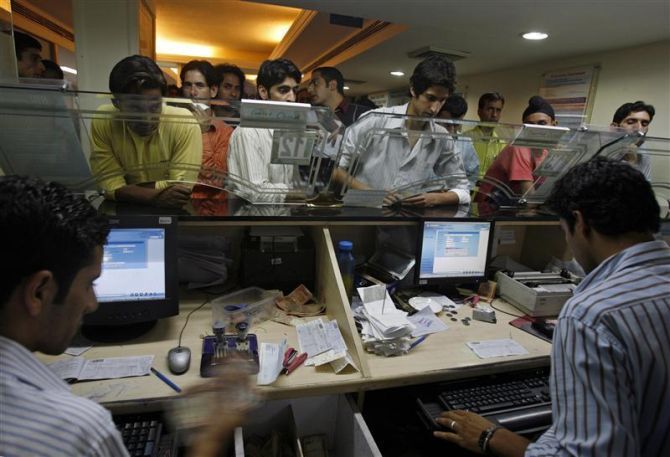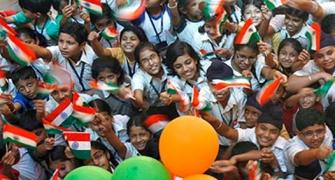 The share of agriculture and allied activities in GDP has declined from 40 per cent in 1973-74 to less than 14 per cent in 2013-14.
The share of agriculture and allied activities in GDP has declined from 40 per cent in 1973-74 to less than 14 per cent in 2013-14.
Through the past few decades, India has been transformed from a largely agriculturally-oriented economy to one in which the services sector accounts for an overwhelming share of gross domestic product (GDP).
While the share of agriculture and allied activities in GDP has declined from 40 per cent in 1973-74 to less than 14 per cent in 2013-14, that of the services sector has risen to about 60 per cent through the same period.

However, despite this paradigmatic shift, there hasn't been a commensurate change in the structure of the workforce. Unlike in other developing economies, where such transitions were accompanied by labour movements from agriculture towards manufacturing, the Indian agriculture segment continues to employ about half the total labour force.
The limited labour movement has largely been towards the construction sector.
An equally troubling aspect has been the rise in casual employment through the decades. Data indicate in rural areas, casual employment for males rose from 26.6 per cent in 1977-78 to 38 per cent in 2009-10.
For urban males, casual employment has risen from 13 per cent in 1977-78 to 17 per cent in 2009-10.
Surprisingly, for urban females, data indicate the opposite trend - while regular employment has risen from 25 per cent in 1977-78 to 39 per cent in 2009-10, casual employment has fallen from 25.6 per cent in 1977-78 to 19.6 per cent in 2009-10.
Another intriguing aspect of female employment is their entry and exit in the workforce appears to be a response to economic stimuli. According to various studies, women tend to enter the labour force when there is a "perceived fall in the reservation income of households", commonly known as the income effect (Himanshu 2011).
As a result, "female workforce participation rates tend to rise in times of distress", which might explain the sharp rise in the participation rates in 2004-05. 










